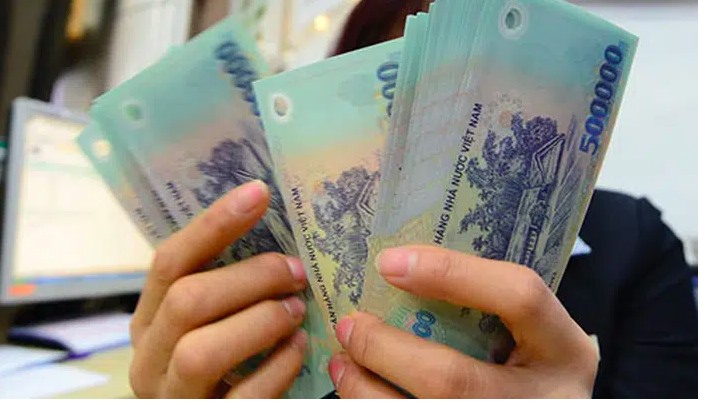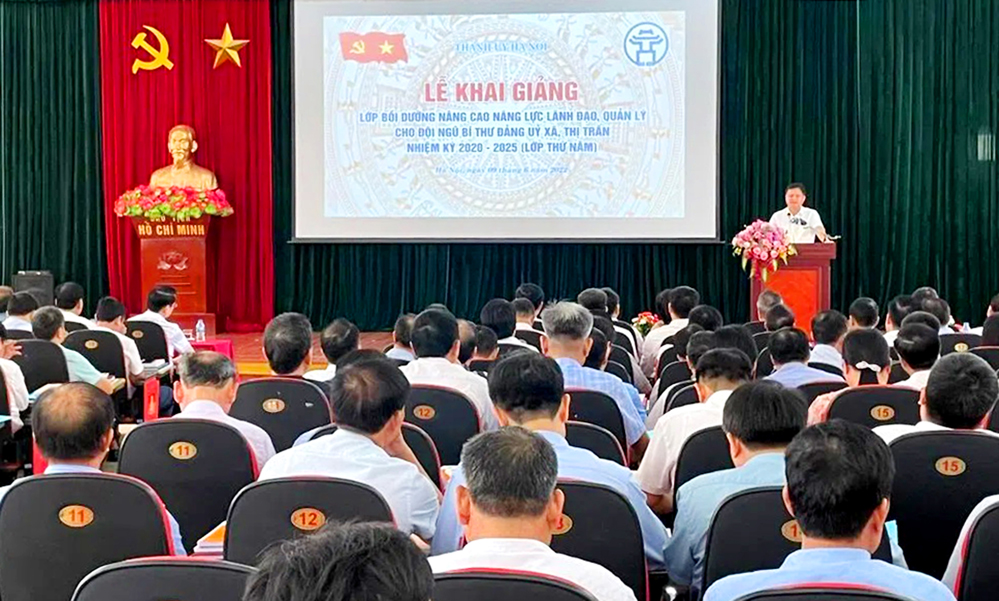Instruction on salary ranking upon the promotion of civil servants and public employees in Vietnam
What are the regulations on salary ranking upon the promotion of civil servants and public employees in Vietnam? - Khanh Hoang (Binh Duong)

Instruction on salary ranking upon the promotion of civil servants and public employees in Vietnam (Internet image)
Regarding this issue, LawNet would like to answer as follows:
1. Instruction on salary ranking upon the promotion of civil servants and public employees in Vietnam
Salary ranking upon the promotion of civil servants and public employees in Vietnamaccording to Circular 02/2007/TT-BNV is as follows:
- In case the seniority allowance has not been received in the old rank, the salary coefficient currently being received in the old rank shall be based on the salary coefficient that is equal to or higher than the nearest one in the new rank. The salary period in the new rank is counted from the date of signing the decision on appointment to the new rank.
The time for consideration for the next salary increase in the new rank is calculated as follows: If the difference between the salary coefficient ranked in the new rank and the salary coefficient currently enjoyed in the old rank is equal to or greater than the difference between the salary coefficient between two adjacent salary grades in the old rank, then:
Calculated from the date of signing the decision on appointment to the new rank; if it is smaller than the difference in salary coefficient between two adjacent salary grades in the old rank, it shall be calculated from the date of ranking the salary coefficient currently enjoying in the old rank.
- In case they are enjoying the over-frame seniority allowance in the old rank, based on the total salary coefficient plus the excess seniority allowance currently enjoyed in the old rank, they shall be classified into the salary coefficient equal to or higher than the nearest one in the new rank.
The time to enjoy salary in the new rank and the time to consider raising the next salary grade in the new rank is counted from the date of signing the decision on appointment to the new rank.
Example 1: Ms. Tran Thi A has been enjoying 6% of the seniority allowance beyond the bracket at the specialist rank (code 01.003) since April 1, 2007 (the total salary coefficient of 4.98 plus the 6% exceeding the bracket currently enjoying at the specialist rank is 5.28).
Ms. A passed the exam for promotion to the rank of main expert and, on February 1, 2008, was appointed by the competent authority to sign the appointment to the rank of main specialist (code 01.002). Ms. A was based on the total coefficient. The current salary at the specialist rank is 5.28, to be classified at the nearest higher salary coefficient of 5.42 at the 4th level of the main expert rank.
Ms. A's salary period at the rank of main specialist and the time for consideration for the next salary increase in the rank of main specialist is counted from February 1, 2008 (the date of signing the decision on appointment to the rank of main specialist).
- In case the total salary coefficient plus seniority allowance exceeds the bracket currently enjoyed in the old rank and is greater than the salary coefficient at the last level in the new rank, then they will be included in the salary coefficient at the last tier in the new tier and are entitled to an additional reserve differential coefficient equal to the total salary coefficient plus the allowances that suddenly exceed the bracket currently enjoyed in the old tier.
The period of salary enjoyment in the new rank (including the reserved differential coefficient) and the time for consideration of the allowance for excess of the seniority allowance in the new rank shall be counted from the date of signing the decision on appointment to the new rank.
The difference coefficients reserved at point c (rounded numbers after the 2-digit commas) are enjoyed during the time when cadres, civil servants, and public employees rank salaries in the new rank.
After that, if cadres, civil servants, and public employees continue to be promoted to another rank or transferred to another rank, then this reserve difference coefficient may be added to the salary coefficient (including extra-frame allowances, if any) currently being received to rank the salary in the appointed rank when raising or changing ranks and stop enjoying the reserve difference coefficient from the date of receiving salary in the new rank.
Example 2: Mr. Nguyen Van B has been enjoying 15% of the seniority allowance beyond the bracket at the rank of accountant (code 07.047) since February 1, 2007 (total salary coefficient 3.63 plus 15% exceeding the bracket currently enjoyed at the rank of cashier is 4.17). On October 1, 2007, Mr. B met all conditions and it was decided by the competent authority to raise him to the rank of civil servant (code 01.004).
Because the total salary coefficient of 4.17 currently being enjoyed at the rank of accountant is larger than the salary coefficient of 4.06 at the last level of the rank of civil servant, Mr. B is classified into the salary coefficient of 4.06 at level 12 of the civil service rank and is entitled to an additional reserve differential coefficient of 0.11 (4.17 - 4.06) from October 1, 2007 (date of appointment).
By October 1, 2009, after completing 2 years and meeting all conditions, Mr. B is entitled to 5% of the seniority allowance in excess of the frame rate at the officer rank and continues to enjoy the reserve differential coefficient of 0.11.
By March 1, 2010, Mr. B was eligible and was decided by the competent authority to upgrade to the rank of expert (code 01.003), Mr. B is based on the total salary coefficient plus the reserve difference coefficient and 5% of the seniority allowance in excess of the bracket currently being enjoyed at the officer rank of 4.37 (4.06 + 0.11 + 5% exceeding the bracket of 4.06) to rank in the nearest higher salary coefficient at the specialist rank of 4.65 level 8;
And stop enjoying the reserve differential coefficient 0.11 from March 1, 2010 (Mr. B is receiving a seniority allowance exceeding the frame rate at the rank of civil servant, so the period of salary in the specialist rank and the time for consideration for the next salary increase in the specialist rank shall be counted from the date of signing the decision on appointment to the specialist rank).
2. Salary ranking when transferring to an equivalent position in Vietnam
Salary ranking when transferring to an equivalent position in Vietnam according to Circular 02/2007/TT-BNV is as follows:
- In case of being appointed to a new rank in the same group of ranks as the old one (old and new ranks have the same salary scale), then rank the salary level and % of seniority allowance exceeding the bracket (if any) currently enjoying at the old rank (including calculating the time to consider the next salary increase) or consider receiving the seniority allowance (if any in the old rank) to the new rank.
- In case of being appointed to a new rank with a salary coefficient of the same rank higher than the old one (for example, from a rank of A2.2 to a rank of A2.1), the salary arrangement when raising the rank of civil servants and public employees is guided in Clause 1, Section II of Circular 02/2007/TT-BNV.
- In case of being appointed to a new rank with a salary coefficient of the same rank lower than the old one (for example, from a rank of A2.1 to a rank of A2.2), then it will be done in the same way as being appointed to a new rank in the same group of ranks as the old one and they will be entitled to an additional differential coefficient of reserve equal to the salary coefficient (including over-the-frame seniority allowance, if any) currently enjoying at the old rank.
This reserve differential coefficient is implemented as guided at point c, clause 1, section II of Circular 02/2007/TT-BNV.
- Key word:
- public employees in Vietnam
- Cases of land rent exemption and reduction under the latest regulations in Vietnam
- Economic infrastructure and social infrastructure system in Thu Duc City, Ho Chi Minh City
- Regulations on ordination with foreign elements in religious organizations in Vietnam
- Increase land compensation prices in Vietnam from January 1, 2026
- Determination of land compensation levels for damage during land requisition process in Vietnam
- Who is permitted to purchase social housing according to latest regulations in Vietnam?
-

- Templates of employment contract applicable to ...
- 21:12, 10/07/2024
-
.png)
- Year-end evaluation and classification process ...
- 17:14, 09/07/2024
-

- Standards of lecturers in training and retraining ...
- 16:37, 10/05/2023
-
.jpg)
- Criteria for assessing the quality of training ...
- 17:59, 05/05/2023
-

- General provisions on work-trip allowances for ...
- 12:08, 19/04/2023
-

- Notable new policies of Vietnam effective as of ...
- 16:26, 11/04/2025
-
.Medium.png)
- Notable documents of Vietnam in the previous week ...
- 16:21, 11/04/2025
-
.Medium.png)
- Notable documents of Vietnam in the previous week ...
- 16:11, 02/04/2025
-
.Medium.png)
- Notable new policies of Vietnam to be effective ...
- 16:04, 02/04/2025
-
.Medium.png)
- Notable new policies of Vietnam effective from ...
- 14:51, 21/03/2025

 Article table of contents
Article table of contents
